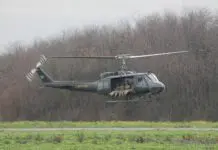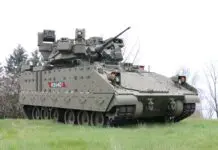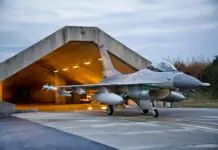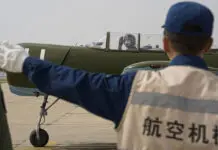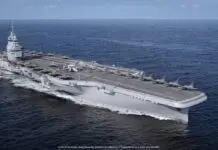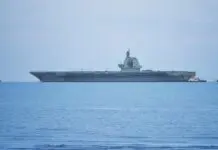With 2024 in full swing and a new government ready to overhaul defense guidelines, the Armed Forces are cautiously assessing how projects and activities will unfold in the short term. In the case of the Argentine Air Force (FAA), we refer to various ongoing initiatives, both in planning and in execution.

Without further ado, the most ambitious project continues to be the long-awaited political decision to formalize and finally initiate the purchase of multi-role fighter jets. At this point, it is unnecessary to discuss candidates, as the open alignment expressed by the current administration, along with various rumors in recent weeks, points to the F-16 A/B MLU as the next fighter for the Argentine Air Force in the medium term.
If the acquisition of the F-16 Fighting Falcons offered by Denmark materializes, the Air Force will be compelled to navigate the incorporation of new capabilities of all kinds. This initiative will also demand considerable efforts and time in terms of investment in human resources, materials, and budgetary resources.
Parallel to the decision on the purchase of F-16 A/B MLU, the Air Force will continue to support projects designed to incorporate, recover, and modernize the existing fleet of fighter and attack aircraft. This includes the ongoing process of recovery and rotation of the A-4Ar Fightinghawks, the modernization of the Embraer EMB-312 Tucano and IA-63 Pampa, as well as the introduction of new Pampa III Block II aircraft.



Transport.
One of the notable achievements highlighted by the Argentine Air Force in recent years was the recovery of its transport capabilities, marked by the arrival of a C-130H Hercules (TC-60), a B-737-700 (T-99), a Saab 340B, and a Huron, as well as the revival of the Fokker F-28. These additions alleviated some pressure on the Hercules fleet, which remained the primary transport solution during the temporary grounding of the Dutch twin-engine aircraft.
To further expand its passenger and cargo transport capabilities, the Air Force initiated the procurement process for a Boeing 737-700QC. However, this purchase was put on hold as the received offers did not align with the initial requirements. The FAA also progressed in the acquisition of mid-size Embraer ERJ-140/145 transport aircraft, with two tenders conducted for a total of four planes.

The arrival of the ERJ-140LRs is part of the project designated “Incorporation of SIX (6) Medium Transport Aircraft of Medium Range to increase the Air Transport and Air Supply Capacity of the I Air Brigade”. As we reported a few days ago, the purchase of six Embraer ERJ145 LR is due to “…the need to satisfy the transfer capacity of military personnel to meet the requirements of the National Military Instrument (IMN) both in peacetime and wartime, which is currently insufficient…“.
Interestingly, the Technical Qualification Report for this project mentions that the ERJ 145 LR offers operational advantages over the Boeing 737-700 “QC,” which was also part of a previous Air Force procurement project: “…The ERJ 145 is ideal for short routes and small airports, with the ability to operate on shorter runways, opening access to destinations inaccessible to larger aircraft. Its flexibility in regional networks benefits services to less-served destinations…”.

Special Operations.
The modernization of equipment for the Special Operations Group (GOE) is one of the projects that we, at Zona Militar, have closely followed. This initiative not only has a direct impact on the GOE but also has broader implications within the national Armed Forces’ special operations community.
As reported on several occasions, the acquisition of weaponry and equipment for the GOE followed guidelines similar to those applied in special units of the Marine Corps and the Argentine Army. One of the main objectives was standardizing the equipment, which may have some unit or force-specific features but will undoubtedly ensure interoperability among Special Operations elements.
Under these guidelines, the Special Operations Group has incorporated and will continue to add various types of equipment, including weapons, protective gear, among others. Regarding weapon modernization, the unit has acquired Daniel Defense Mk18 RIS III and M4A1 RIS III rifles (with Trijicon MRO HD red dot sights), Daniel Defense DELTA 5 PRO designated marksman rifles (with Leupold Mark 5HD 3.6-18X44 M5C3 FFP PR1-MIL scopes), and OOW249P light machine guns.

The initial project not only covered weaponry with the acquisition of GLOCK 17 Gen5 pistols, M60E6 7.62x51mm machine guns, DD5V4 7.62x51mm designated marksman rifles, anti-material rifles, M203 40mm grenade launchers, but also included various accessories (suppressors, illuminators), individual protective equipment, etc.
Since the equipment was received by the GOE, the unit and the supplier have conducted local and international training to refine all aspects related to the systems in service.
Helicopters.
Announced in a timely manner by the former Chief of Staff of the Argentine Air Force, Brigadier General Xavier Isaac, the efforts for 2024 would focus on consolidating rotary-wing assets, both through the modernization of existing systems and the introduction of new capabilities. In the latter case, the process has already begun with the arrival of the first Bell 407GXi.

In the realm of modernization are the Hughes H-500D helicopters of the VII Air Brigade, for which the project called “Standardization, Modernization, and Removal of Obsolescence from the Cockpit of the Hughes 500D Weapon System” has been launched. As detailed by the Chief of Staff of the Air Force several months ago, the initiative includes the digitization of avionics, to be carried out entirely by personnel from the Grupos Técnicos de las Áreas de Material Rio Cuarto (ARMACUAR) and Quilmes (AMQ).
For the current year, it is also expected that the momentum gained for the SA-315B Lama fleet, high-mountain helicopters of the IV Air Brigade, will be sustained. These helicopters received a significant boost in recent months with the acquisition of spare parts, components, and the contracting of maintenance services. General Isaac also mentioned the intention to modernize the Lama fleet’s cockpit, indicating an expectation for a considerable remaining service life for the aircraft.
The Argentine Air Force has also expressed the intention to increase the Bell 212/UH-1N fleet, for which a Letter of Request (LOR) was submitted to the U.S. government for UH-1N helicopters. A formal response was awaited a few months ago to evaluate the next steps. If affirmative, the U.S. could make available decommissioned UH-1N helicopters from the Marines (stored in AMARG) or those being retired by the USAF, aircraft that are in the process of being replaced by the MH-139A Grey Wolf.


As for the out-of-service Russian Mil Mi-171E helicopters, various versions about their future circulated in recent months, all related to a possible transfer to Ukraine. However, no official details have been disclosed. It is worth noting that these helicopters have not been operational for several years, an issue that was attempted to be addressed by contracting maintenance and overhaul services. The initiative was ultimately abandoned by the Air Force, forced to cancel the contract with Kosmo Technopromexport due to the sanctions imposed by the West following the Crimea invasion, a situation that worsened with the February 2022 invasion.
Faced with the need for heavy transport capacity, the Argentine Air Force evaluated various options, including the acquisition of CH-47D Chinook and CH-46E Sea Knight helicopters. In the latter case, a delegation from the FAA was scheduled to travel to the U.S. to assess the equipment and its respective documentation. If there are no developments, and if the helicopters prove to be a favorable option for the Force, the next phase would be to move forward.
In a subsequent installment, we will cover other projects expected to advance throughout 2024.
You may also like: AKAER delivers three hatches for the construction of Brazilian Navy’s first Tamandaré frigate



